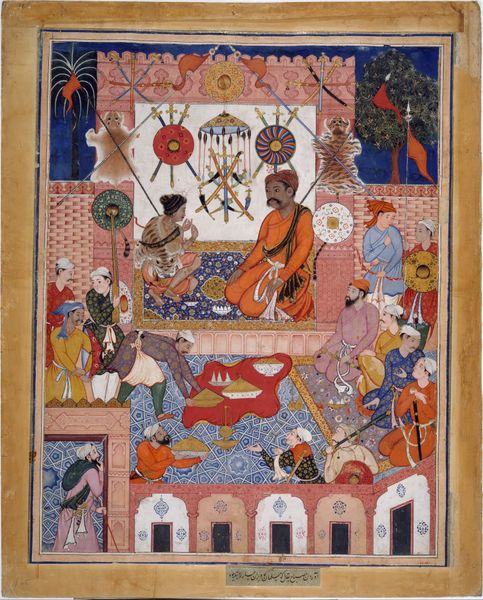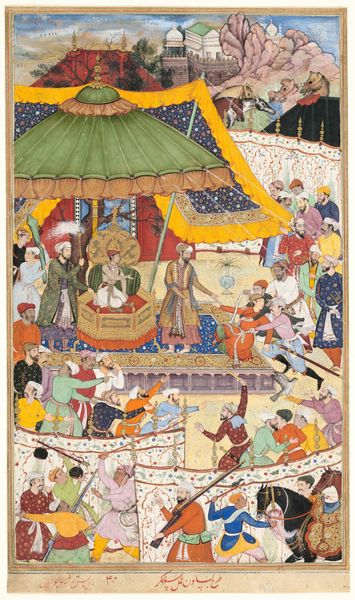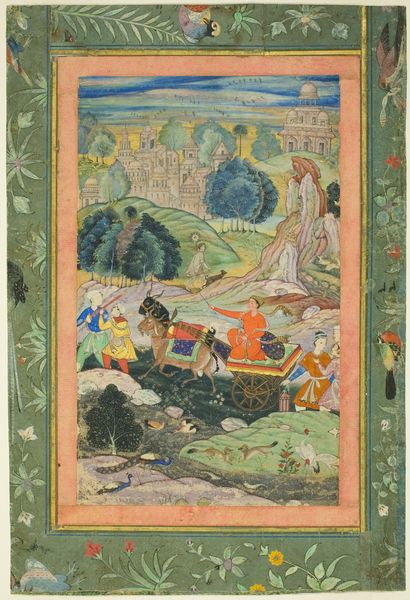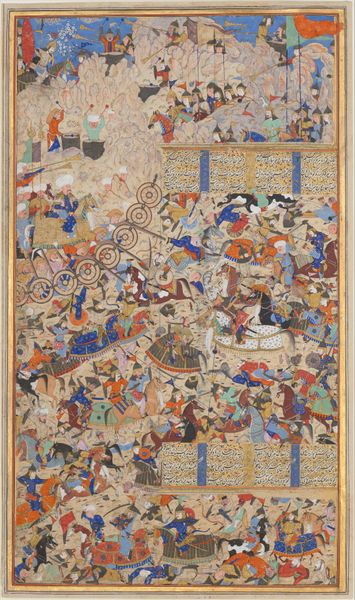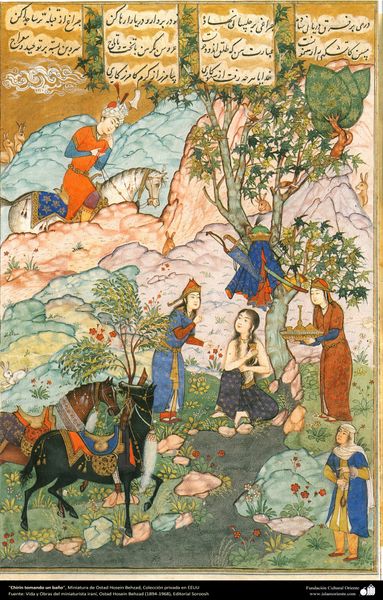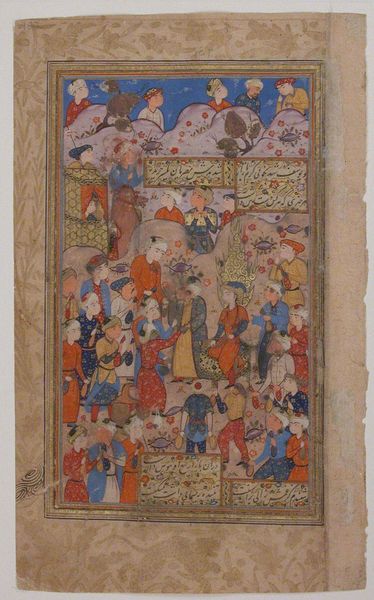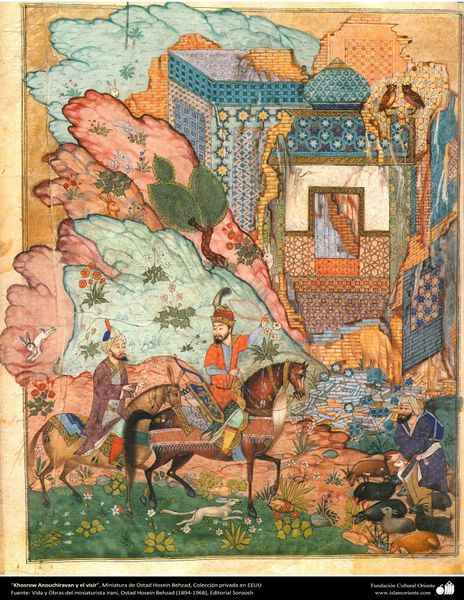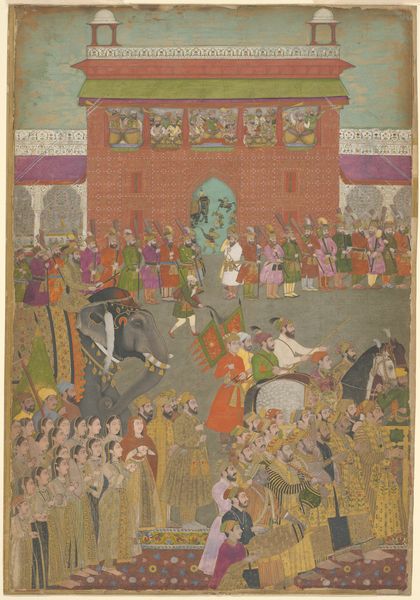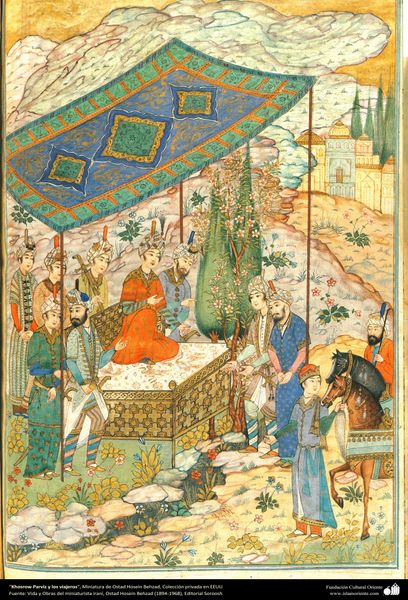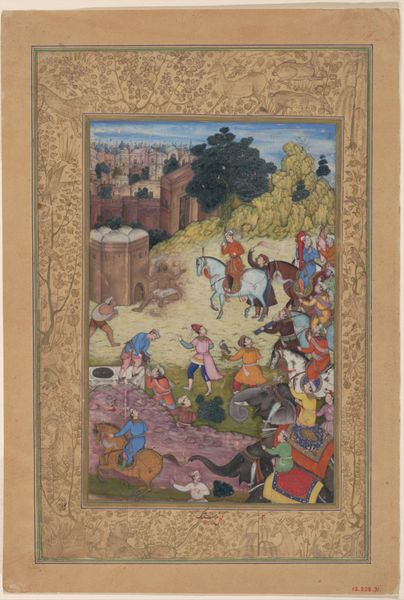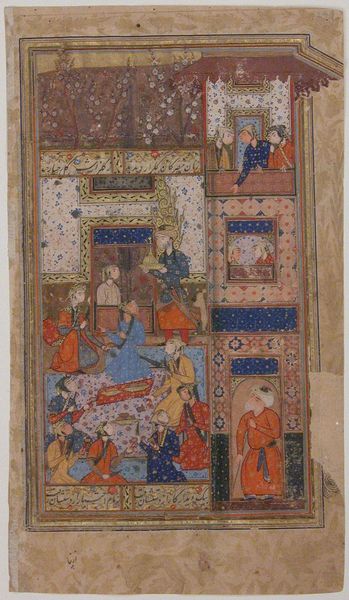
"Assad Ibn Kariba Launches a Night Attack on the Camp of Malik Iraj", Folio from a Hamzanama (The Adventures of Hamza) 1539 - 1594
0:00
0:00
painting, watercolor
#
narrative-art
#
painting
#
watercolor
#
soldier
#
naive art
#
horse
#
men
#
islamic-art
#
genre-painting
#
history-painting
#
miniature
#
watercolor
Dimensions: Overall painting: H. 27 in (68.6 cm) W. 21 1/4 in. (54 cm) Frame: H. 30 in. (76.2 cm) W. 37 1/4 in. (94.6 cm) D. 2 in. (5.1 cm)
Copyright: Public Domain
This dynamic painting, "Assad Ibn Kariba Launches a Night Attack on the Camp of Malik Iraj," comes from the Hamzanama, created in India around 1564-1579. It's made with opaque watercolor, ink, and gold on cloth. The Hamzanama was a hugely ambitious project, commissioned by the Mughal emperor Akbar. Its creation involved a workshop of artists, each contributing their specific skills. We can see the labor involved, not only in the detailed rendering of figures, animals, and architecture but also in the preparation of the materials themselves. The cloth, the grinding of pigments, and the application of gold leaf all required considerable effort. The vibrant colors and intricate details speak to the wealth and power of the Mughal court. Yet, the very act of producing such a monumental work also reflects the social and economic structures of the time. The division of labor within the workshop, the patronage system that supported the artists, and the materials sourced from across the empire, all offer insights into the complexities of Mughal society. Considering materials, making, and social context allows us to appreciate the Hamzanama as more than just a beautiful image. It's a testament to human creativity, skill, and the intricate web of relationships that shape artistic production.
Comments
No comments
Be the first to comment and join the conversation on the ultimate creative platform.
